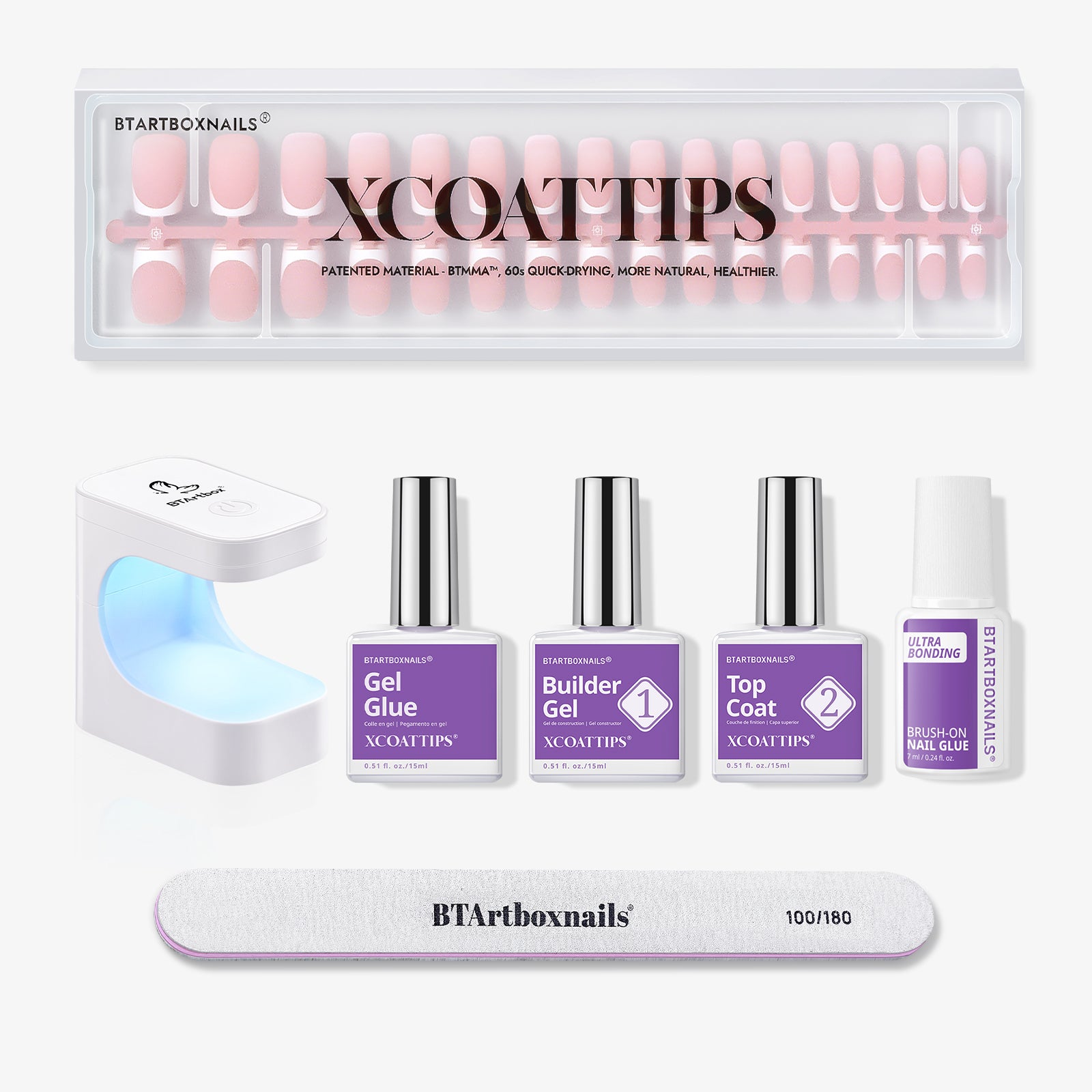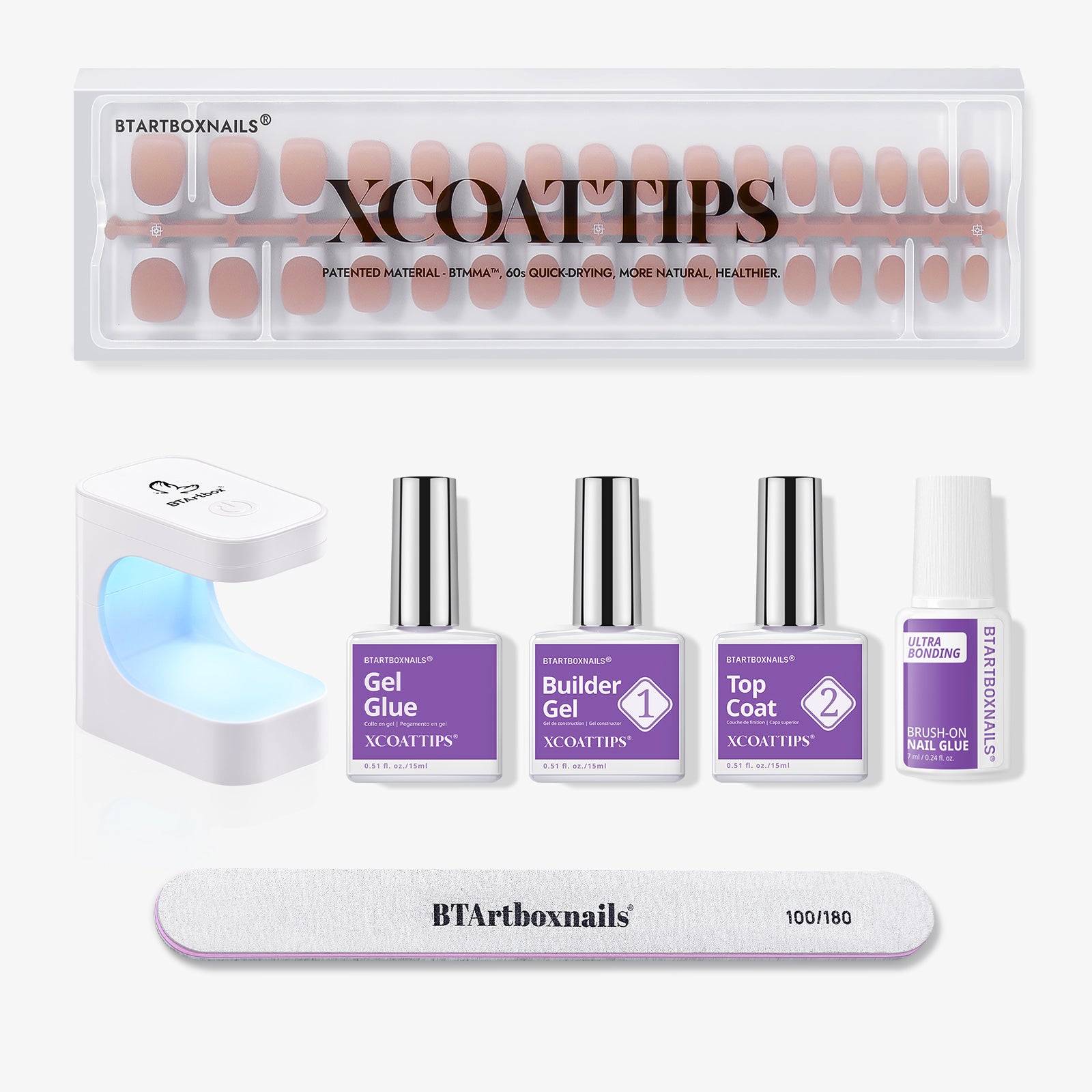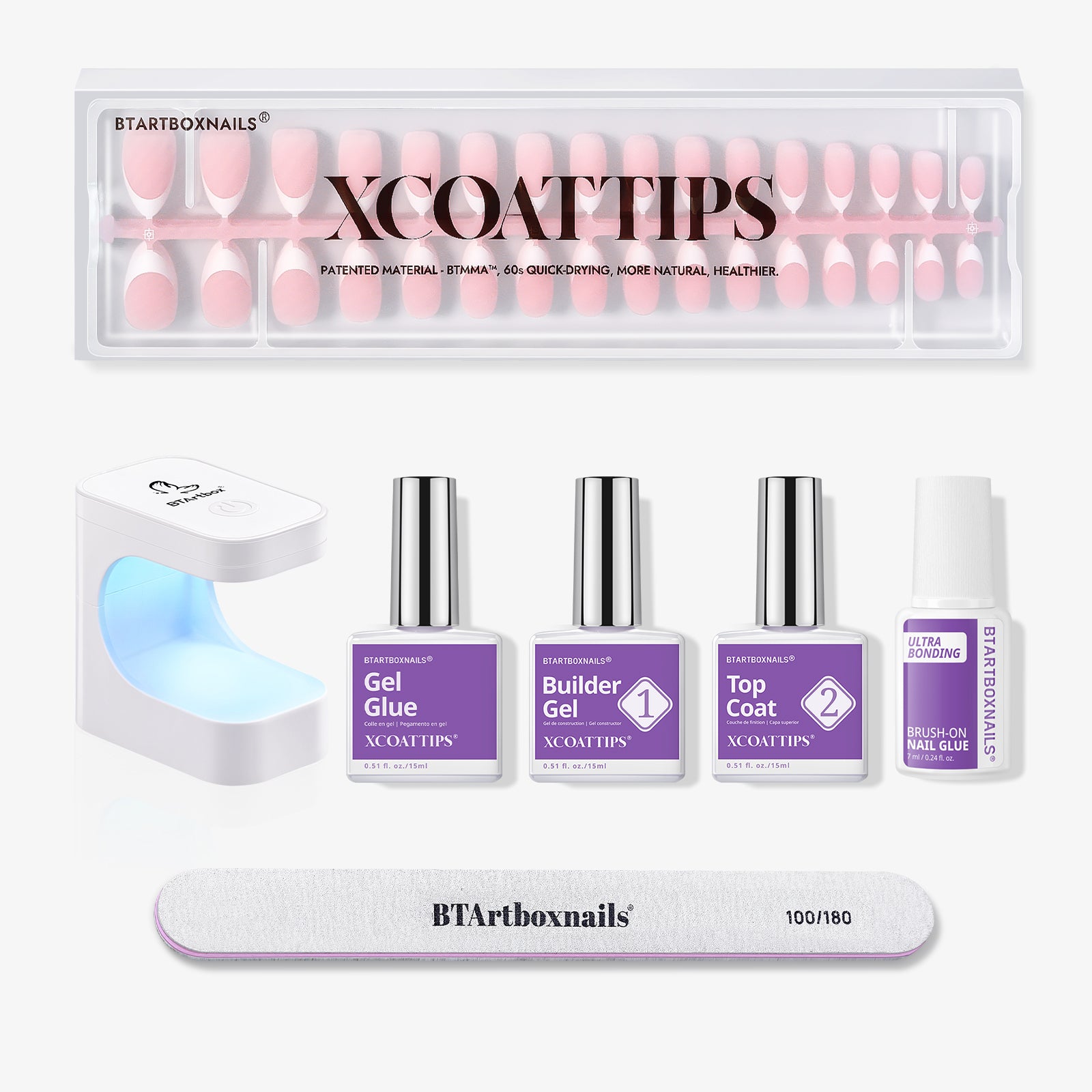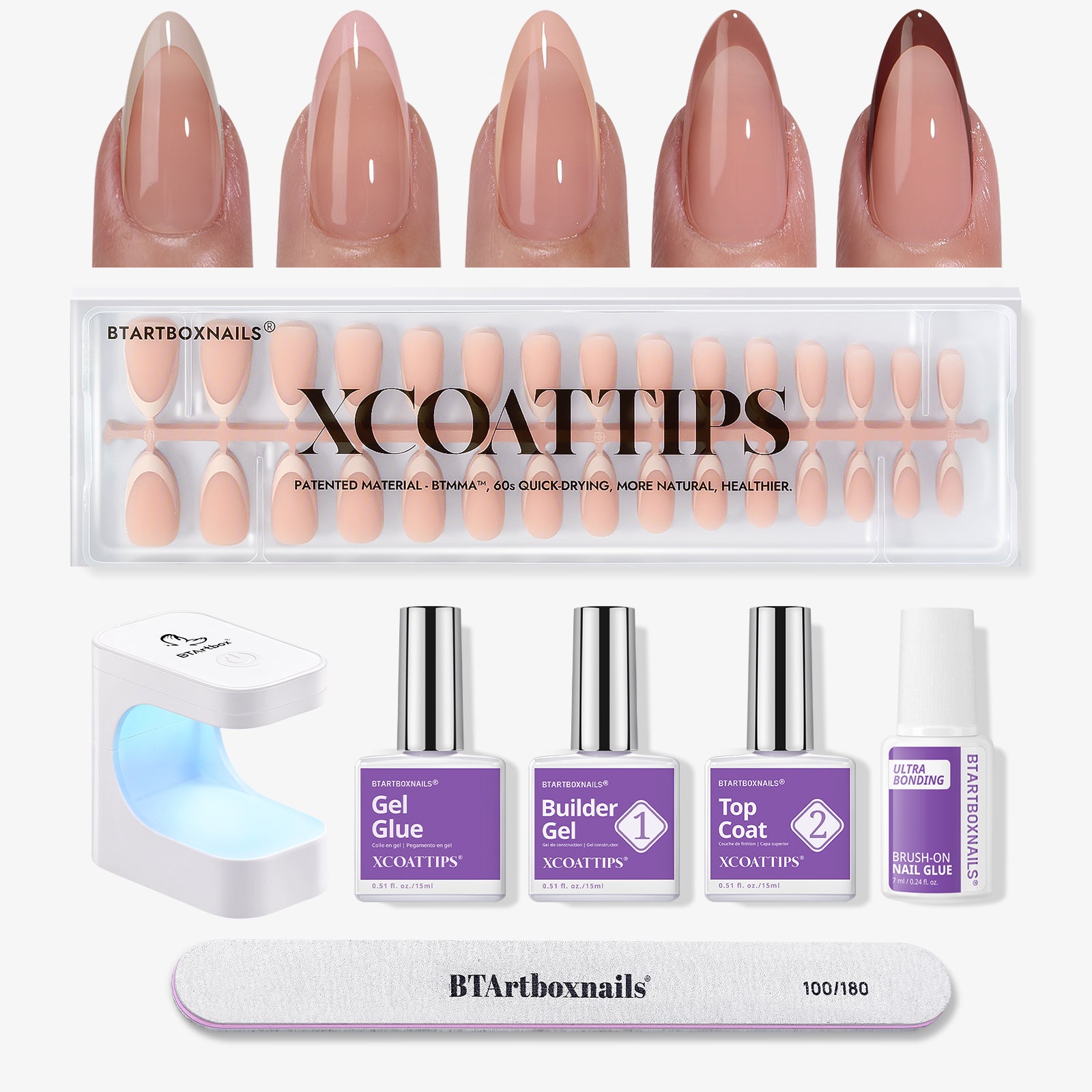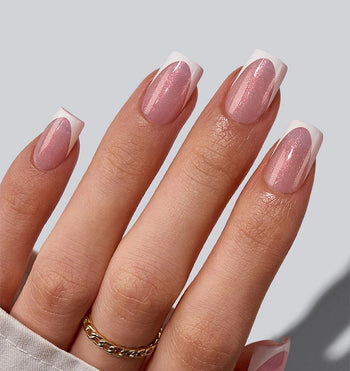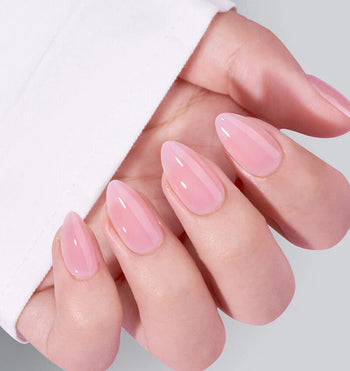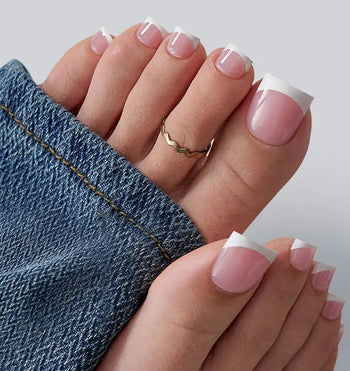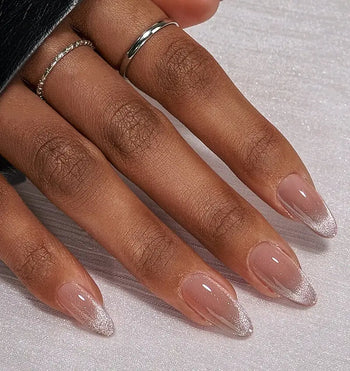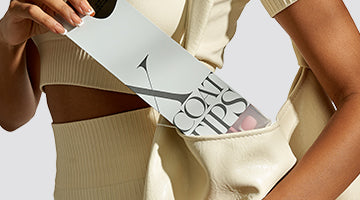Mastering how to type with long nails can transform a potentially cumbersome endeavor into an effortless task. As you adorn your fingertips, it's crucial to adjust your daily habits—typing included—to accommodate your stylish choices.
Whether you're crafting a novel or simply sending a text, long nails don't have to slow you down. Learning to type with the pads of your fingers and choosing the right nail shape can help maintain both your typing speed and nail integrity.
With a few clever tweaks to your typing method, such as adopting a pianist's gentle touch and using ergonomic tools, you can type confidently and comfortably without forsaking your glamorous long nails.
Curious about more tips and tricks for typing with long nails? Read on to discover how to keep your typing game strong and your nails flawless.
Choosing the Ideal Nail Shape and Length
Selecting the right nail shape and length can significantly enhance your typing experience. Here, you'll discover how to align your style preferences with functional typing requirements.
Opting for Function Over Fashion
When prioritizing typing ability, function should take precedence over fashion.
Oval and round nails offer a comfortable typing surface without sacrificing too much on style. These shapes are less likely to snag on keys compared to stiletto or pointy nails.
Square nails with softened edges (sometimes referred to as squoval) can also be a practical option as they combine a fashionable look with increased ease of typing.
Balancing Length and Practicality
Moderation in nail length is key for maintaining typing speed and accuracy. Typically, keeping nails at a short to medium length is practical for everyday typing.
While you can wear longer nails, including fake or acrylic nails, you may have to adjust your typing technique to accommodate them. The longer the nails, the greater the adaptation required for effective typing.
Selecting Nail Shapes for Typing Comfort
Your choice of nail shape can contribute significantly to your comfort level while typing. Consider the following:
- Oval nails naturally follow the contour of your fingertips and facilitate a fluid typing motion.
- Flat-shaped nails can touch the keys more easily and reduce the risk of incorrect strokes.
- Round nails are less likely to interfere with adjacent keys, offering greater precision.
- Coffin nails or square nails can work if kept at an appropriate length.
To optimize typing, select a nail shape that aligns with your finger's natural form and provides a comfortable reach to each key.
Mastering The Typing Techniques

To effectively type with long nails, adjusting your technique and practicing specific skills are essential. The following tips will help elevate your typing abilities while maintaining nail integrity.
Touch Typing Essentials
Touch typing is a fundamental skill where you type without looking at the keyboard. This technique relies on muscle memory to find keys. To practice this with long nails:
- Position your hands: Keep your wrists straight and hover your fingers over the home row keys.
- Use fingertip pads: Contact keys with the pads of your fingertips rather than nails.
Finding Your Typing Rhythm
Developing a comfortable typing rhythm is crucial for speed and efficiency. Consider these points:
- Minimize finger movement: Aim for small, precise movements to prevent nail interference.
- Pace yourself: Begin slowly to build accuracy, then increase speed as your confidence grows.
Improving Keypress Accuracy
To improve keypress accuracy:
- Focus on gentle keystrokes: Press keys softly to protect your nails and reduce the risk of mistyping.
- Implement regular practice: Consistently practicing will enhance your muscle memory and accuracy over time.
Ergonomics and Posture
When typing with long nails, maintaining ergonomic posture is essential to prevent strain and increase efficiency. Adopting correct posture and hand positioning can significantly enhance your typing experience.
Adjusting Your Chair and Desk
Ensure that your chair is adjusted so that your feet rest flat on the floor and your knees are at a 90-degree angle.
Your desk height should align with your elbows when they are also bent at a 90-degree angle, allowing your arms to rest comfortably without reaching up or down.
Correct Hand Positioning
Your hands should hover above the keyboard with fingers positioned gently on the keys.
If using an ergonomic keyboard, make sure it accommodates for natural hand posture with a design that reduces the need to stretch fingers unnecessarily.
Keep your nails above the keys, using the pads of your fingers to strike the keys.
Maintaining Wrist Health
Keep your wrists in a neutral position, not bent upwards or downwards.
If your keyboard is too high, consider adding a wrist rest for support. This helps prevent stress on your wrists while typing, ensuring your nails do not impede your wrist posture.
Take frequent breaks to stretch and give your wrists a rest from the typing position.
Nail Care While Typing
Effective typing with long nails requires careful consideration to avoid damage. Focusing on prevention, protection, and strategic techniques, you can maintain both nail health and typing efficiency.
Preventing Nails From Catching
To minimize the risk of your nails catching on the keyboard, type with the pads of your fingers, not the nails. Keep your fingers:
- Straight: Align them with the keys to reduce sideways stress.
- Flat: This helps prevent the nails from hooking underneath key edges.
Remember to regularly trim and file your nails with an emphasis on smooth edges, as jagged or sharp corners can catch more easily.
Protecting Nails From Impact
When typing, it's crucial to minimize direct impact on your nails. Ensure to:
- Use a light touch when striking keys to reduce force on your nails.
- Keep your nails at a moderate length; extremely long nails may be more prone to breakage from the impact.
Apply a strengthener or a hardening polish to fortify your nails against the repetitive taps associated with typing.
Strategies to Avoid Scratching
Alter your typing habits to decrease the chance of scratching your keys or desk surface. Consider:
- Keeping your hands parallel to the keyboard; this creates less opportunity for nails to drag across surfaces.
- Taking breaks to rest your hands and inspect your nails for any signs of wear or tear that could lead to accidental scratches.
Typing Accessories and Gear
Adapting your typing equipment and accessories can greatly enhance your experience and comfort while typing with long nails. From keyboards designed to minimize nail interference to tools that assist touch screen use without causing damage, the right gear can make a significant difference.
Selecting Nail-Friendly Keyboards
Keyboard Design: Choose keyboards with rounded edges on the keys to prevent your nails from getting caught while typing.
Keyboards with flat and wide keys can reduce the strain on your fingertips and nails.
Switch Type: Look for keyboards with a lower actuation force, which require less pressure to register a keystroke, thus reducing the amount of stress on your nails.
Using Styluses for Touch Screens
Stylus Types: A stylus is an exceptional accessory for touchscreen devices. It replicates the touch of a finger without putting your manicure at risk.
Choose a stylus with a soft, rounded tip to seamlessly interact with your device's screen.
- For laptops and tablets: A capacitive stylus works well with the touch-based interfaces.
- For precision tasks: Consider a stylus with a finer point, such as an active stylus, which can offer pinpoint accuracy.
Considering Ergonomic Accessories
Ergonomic Keyboards: An ergonomic keyboard with a split design allows your hands to rest in a more natural position. The keys are often easier to reach with less movement, making typing with long nails less cumbersome.
Typing Mate or Keyboard Guard: This accessory lays over your keyboard, creating a physical barrier that helps to prevent your nails from getting caught between keys.
Material: Opt for a guard with a soft, flexible material to maintain comfort and keystroke sensitivity.
Conclusion
Typing easily with long nails is possible with a few simple tips. Just use the soft parts of your fingers for typing, keep your nails in good shape, and choose tools that make typing comfortable.
Keep your typing swift and stylish with BTArtBox Nails' selection of fashionable nails, available in French XCOATTIPS and premium press ons designed for comfort and flair. Enjoy effortless typing without sacrificing your nail game. Explore our glue-on nails, nail kits, fancy nails, and stick-on nails for the perfect look.
Frequently Asked Questions
What are some tips for texting with long acrylic nails?
Texting with long acrylic nails is more manageable when you use the sides of your fingers or your fingertips.
Ensure your nails are well-shaped to avoid accidental multiple key presses and maintain a firm touch to increase precision.
Can long nail length affect typing speed and if so, how?
Yes, long nails can affect typing speed as they may hinder your ability to use the standard touch typing method.
You might need to alter your hand positioning and keystroke techniques, leading to reduced speed until you become accustomed to the changes.
Are there specific techniques for typing on laptops with longer nails?
With longer nails, typing on laptops involves minimal hand movement and a focus on using your fingertips to strike keys.
Keep your hands steady and use a light touch to avoid nail damage and maintain keyboard functionality.
What adjustments can be made to effectively use a mechanical keyboard with long nails?
To effectively use a mechanical keyboard with long nails, opt for keycaps that are flat and require less force to press.
Adjust your typing angle and use a light but firm keystroke to prevent your nails from hitting adjacent keys.
How do you manage to type on a phone with long fake nails?
For typing on a phone with long fake nails, use your nail tips or the pads of your fingertips for more accuracy.
Consider a stylus to simulate the touch of a finger if typing becomes too cumbersome.
What's the best way to adapt to typing with long nails for daily computer use?
Adaptation to typing with long nails includes keeping your nails at a functional length. Also, practicing regularly to build muscle memory and using keyboard shortcuts to minimize the amount of typing required.
Ensure your typing posture is ergonomic to avoid strain.
